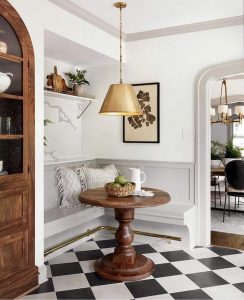
If you like a home with character rather than just another of the little boxes on the hillside, an older one can sound like the perfect solution. However, older homes, especially fixer-uppers, come with their own set of quirks that can end up costing you much more than you had planned for. Before you buy, be aware of these red flags.
Previous Renovations – Contractors may have cut corners to save costs in previous renovations. Insist on a full inspection before buying any home. It may be a wise decision to also hire a structural engineer to have a look around. This is particularly true with older homes.
Cracks in Walls and Floors, Uneven Stairs/Sidewalks, and Jamming Doors/Windows – All of these things indicate possible foundation problems. This is highly likely in areas with seismic activity, soil moisture or unstable bedrock.
Single-Pane Windows – These windows are about as energy efficient as leaving the window open entirely. Replacing windows with double or triple-panes is expensive and time consuming. However it is well worth the effort for huge savings on your hydro over time.
Electrical Wiring, Service Panels, and Circuit Breakers – Old electrical can pose a big safety risk. Anything installed prior to 1960 is nearing the end of it’s 70 year lifespan and will soon need replacing. Electrical panels and circuit breakers may not be able to handle your modern appliances.
Electrical Outlets – Older homes tend to have one or two outlets per room and additional outlets will cost an average of $200 per installation.
Toxic Materials – Lead paint use was regulated in 1976, meaning most homes older than that will have at least one coat of toxic lead paint. Asbestos was used for fire proofing prior to 1990: It is highly toxic and requires specialty removal services. Radon is a naturally occurring radioactive gas that can cause lung cancer. Radon can enter the home through any opening where the house has contact with the soil. All of the above materials can be professionally tested and contained.
Termite Damage – Common in the southern parts of Canada and along the coasts, termites can have a devastating effect on a home. Signs of damage include – hollow sounding wood, discolouration, bubbling or warping of wood surfaces, flakes of paint or wood on the floor, termite mud tubes.
Smells – Anything that has a musty smell can indicate mold or mildew or even mice. An ammonia-like smell can indicate rats.
Plumbing and HVAC – Water damage can be a massive issue in many older homes, look for signs in every room on every level of the home. An old HVAC system can be costly to replace or install. We don’t recommend having old HVAC systems retrofit, it’s best to have them fully replaced whenever possible.
Heritage Classification – A heritage home classification may bring some lofty bragging rights, but it almost always means higher renovation costs due to authenticity guidelines, and it severely limits the kind of renovations you can do.



